Land & Water Around Us
🌎 What’s under our feet, around our towns, and stretching across the world? This Land and Water Around Us video for kids brings the geography of Earth to life for second grade students. Through vivid visuals and clear explanations, learners explore landforms and bodies of water, weather and seasons, and how humans interact with the environment. It’s the perfect introduction to the physical world around us.
🏞️ Explore Mountains, Lakes, Forests & More in This Grade 2 Geography Video
Students will discover the names and features of landforms like mountains, valleys, plateaus, and plains — as well as oceans, lakes, rivers, and streams. They’ll learn where these features appear across the United States and how they help shape how and where people live. The video also explores natural events like erosion and weather changes that affect land and water over time.
♻️ This land and water around us video for kids goes beyond naming things — it helps students understand how humans depend on natural resources and how our choices impact the environment. Topics like renewable vs. nonrenewable resources, recycling, and environmental care are introduced in a clear, grade-appropriate way.
🏆 Perfect for any Grade 2 geography or science unit, this video supports lessons on land and water, natural resources, the environment, and how people change the world around them. Use it to introduce key concepts or support discussions about conservation, habitats, or regional differences in the U.S.
Video length: 13:15 minutes.
Worksheets
Quiz
Match the Description Vocabulary Sheet
Where I Live
My Seasons
Natural Resource Review
Draw a Scene
Universal Resources
National Standards
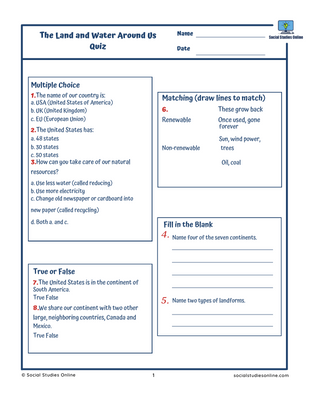

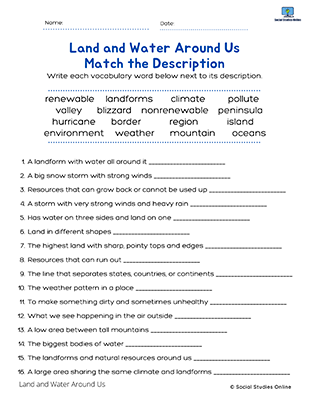

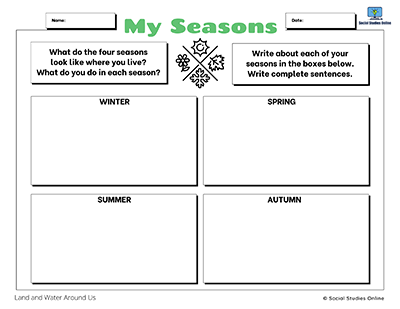

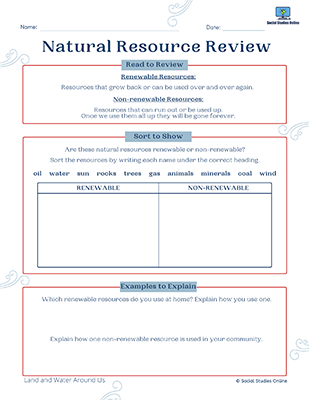

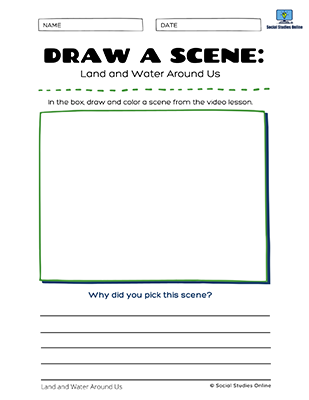

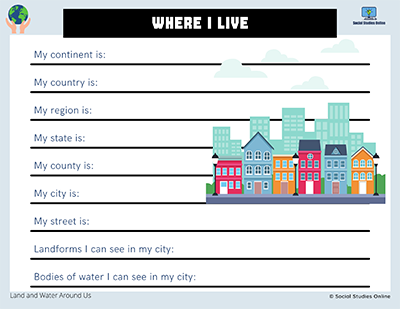

Video Subscriptions
When you only need one video- Unlimited viewing of 1 video
- Post-trip quiz + resources for 1 video
- Access to Closed Captioned version of 1 video
- Lowest-cost option
Teacher + Class Subscription
Teacher + Students- Unlimited access to the entire video lesson library
- All quizzes + learning resources
- Access for 1 teacher + all students
- Access to all Spanish videos + resources
- Access to all Closed Captioned videos
- Best value option for one teacher
School-wide Site License
All teachers + All students- Unlimited access to the entire video lesson library
- All quizzes + learning resources
- Access for all teachers and all students
- Access to all Spanish videos + resources
- Access to all Closed Captioned videos
- Best for school administrators supporting their teachers & students
- Up to 500 students – $450/year
- 500-1,000 students – $600/year
- 1,000+ students – $1,000/year
Topics Covered
The U.S. is made up of 50 states on the continent of North America
Neighbors on the continent are Canada & Mexico
Across the country are many landforms and bodies of water
The climate across the country also varies with extremes from deserts to blizzards
The landforms across the country are grouped into regions that are alike
Regions also have natural resources in common
Renewable/Nonrenewable resources
Examples & solutions
Classroom Ideas
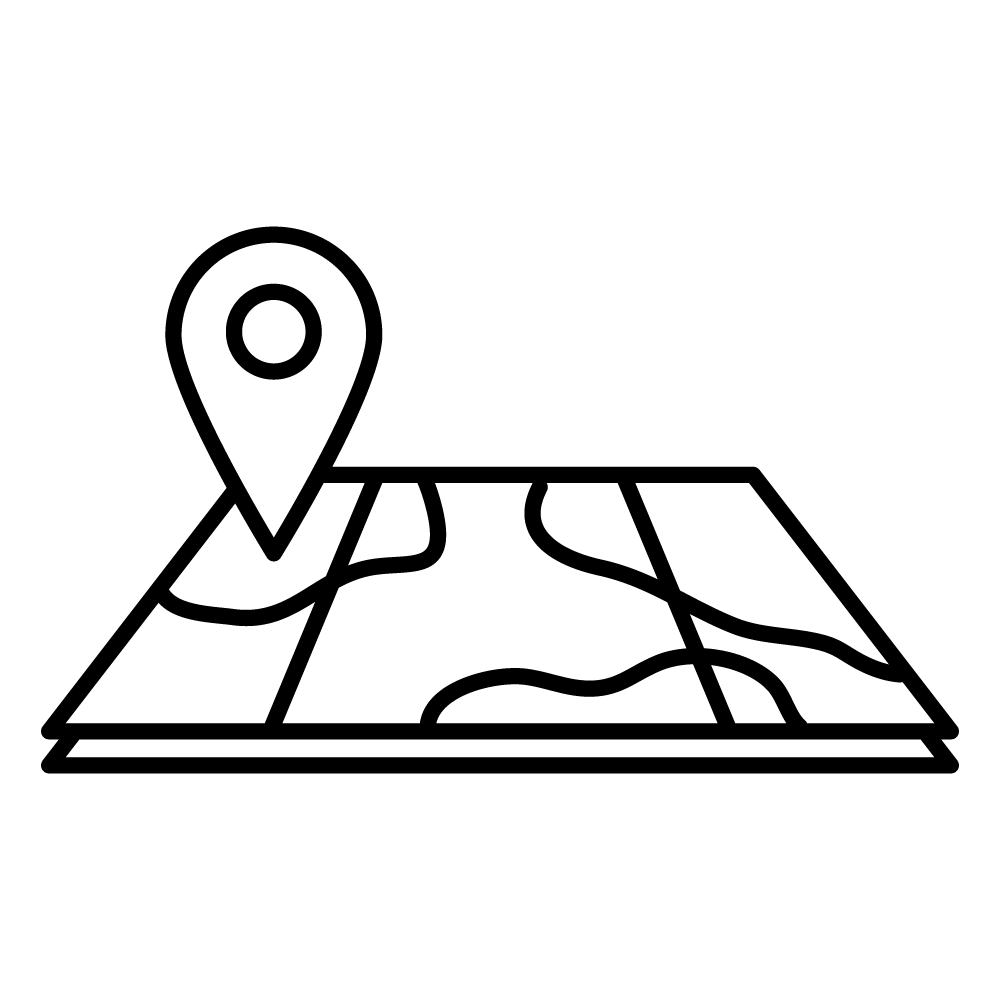
Landforms
Identify landforms and bodies of water around your community or your state.
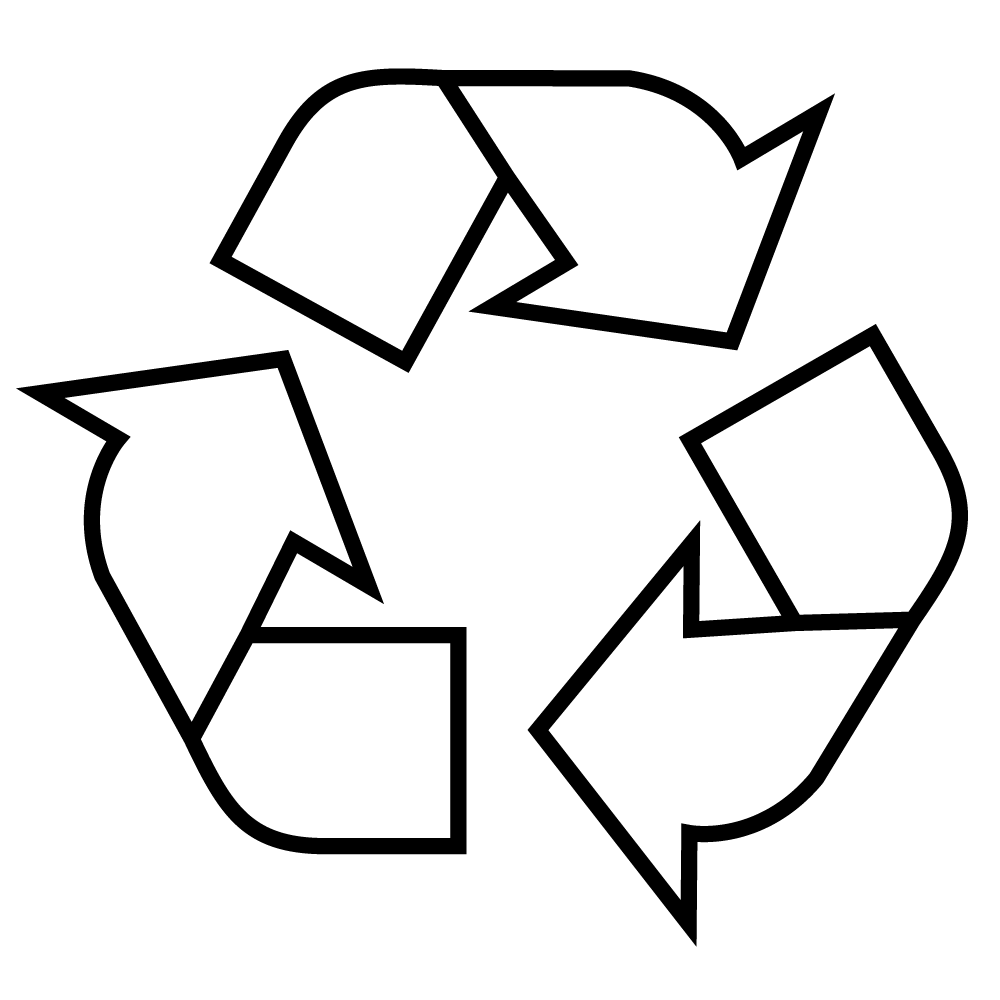
Local Waste Management
If possible, go visit your local metro waste authority to learn how they are helping preserve your town’s natural resources (if you can’t go to them, see if a representative can come to your classroom) or have students research their local waste management facility.
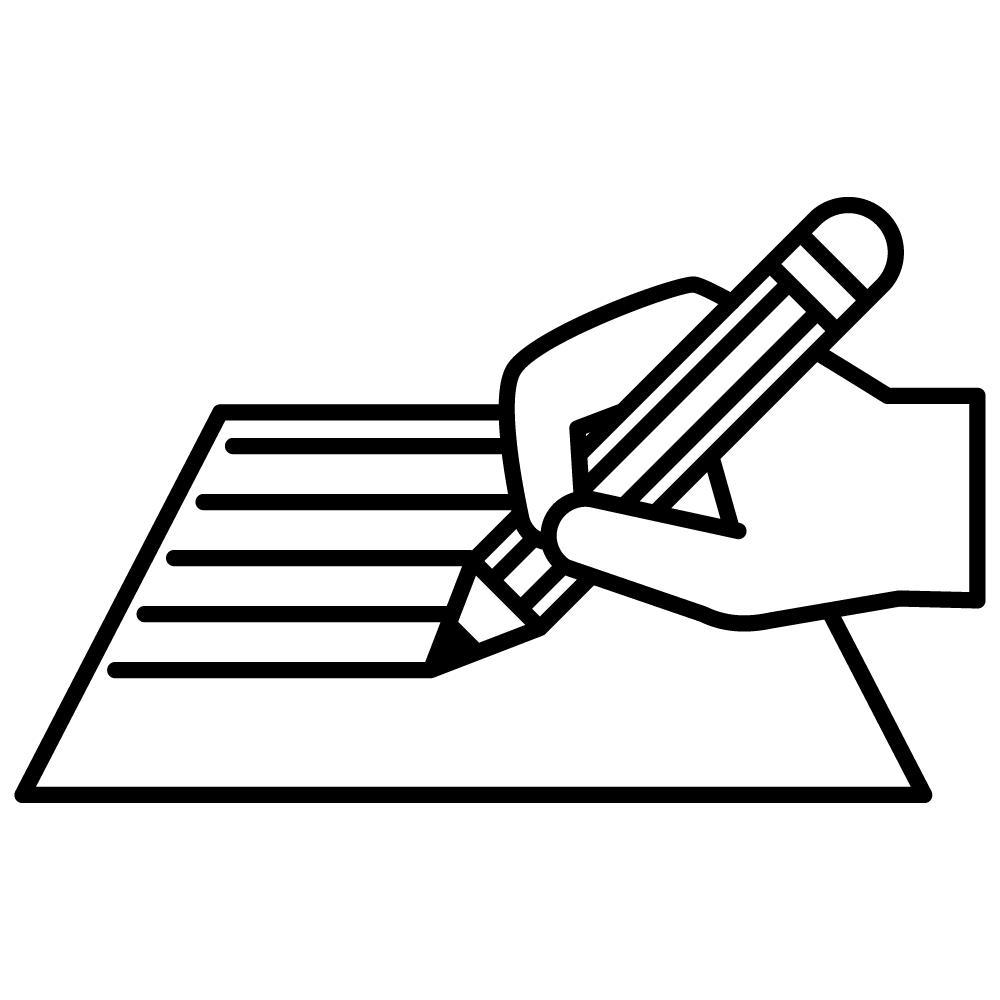
Cloze Practice
A cloze piece has full sentences used in the virtual field trip with blanks where students can write in the information that is missing. This task requires close listening to the trip in order to complete it.
Coral reefs are the _______ type of ecosystem in the world. They’ve been around for over _____ million years.
Answers: oldest; 240
Alternatively, you could have students create 5-10 cloze statements and they could share those with the class.
A third alternative is to distribute the cloze worksheets before watching the video. Students can fill them in as they watch.

Conservation
Prompt students to write about how people can conserve natural resources.

Art and Geography
Draw a picture of your community.
Draw a picture of the landforms in your state.
Draw a picture of the items you recycle at home.
Draw a picture of the natural resources in your community.
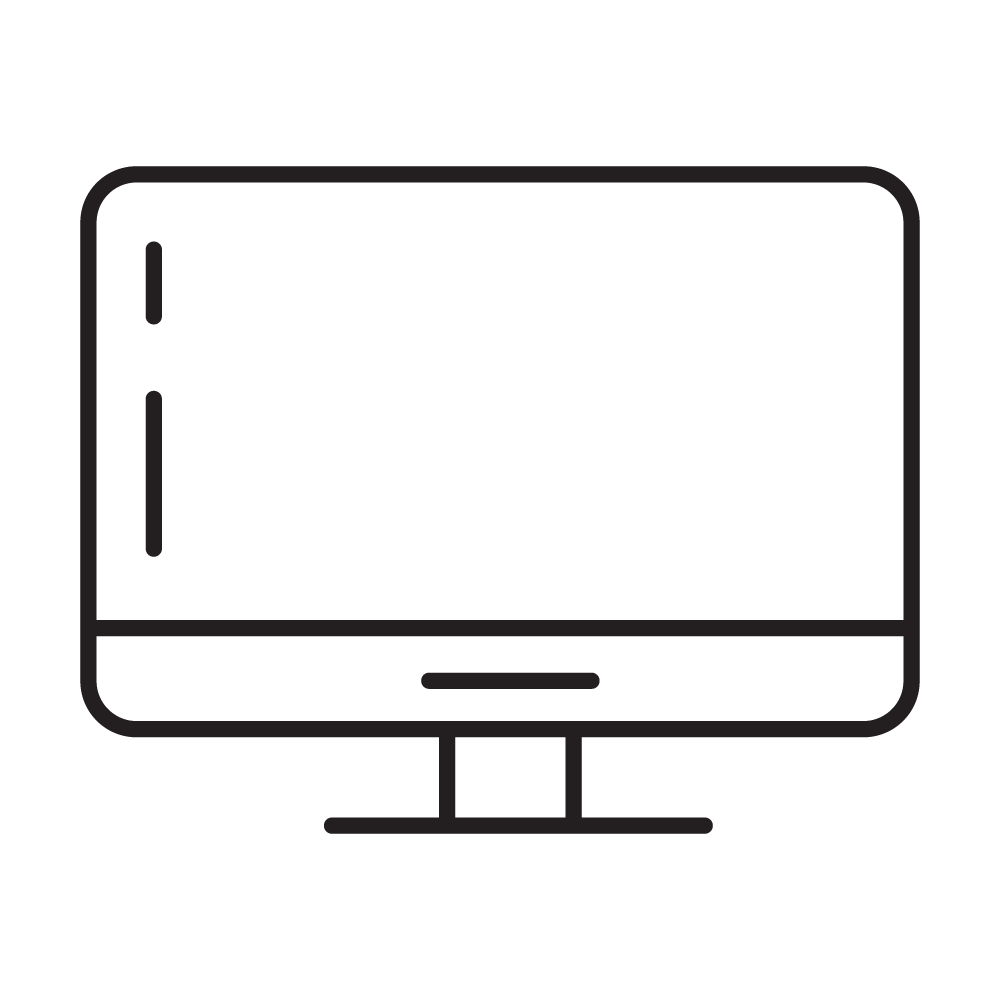
Visual Learning
Offer videos to struggling learners as another form of accessing information and creating knowledge.
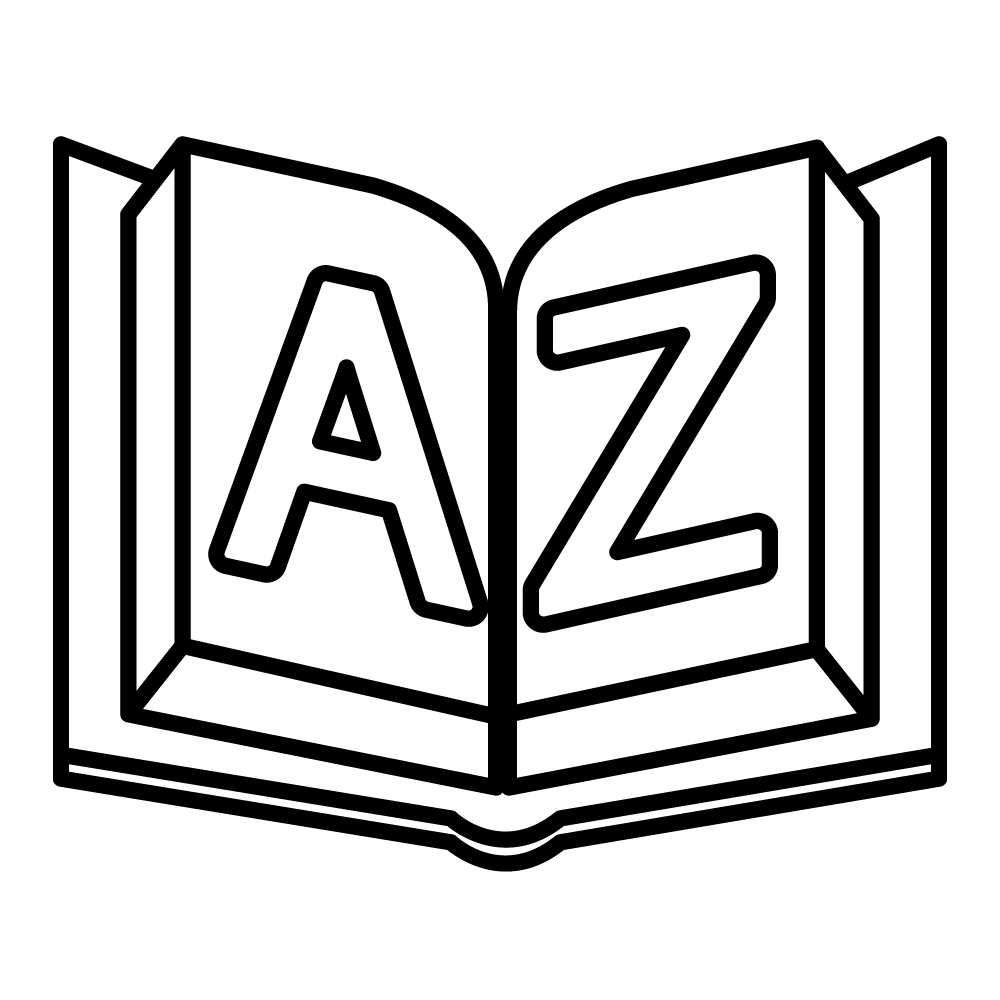
Explore Vocabulary
Identify key vocabulary terms while previewing each video. Prompt students to find the meaning of each word as they watch the video. Example: What do the words ecosystem and nonrenewable mean? Think about the meaning of this word as you watch the video.
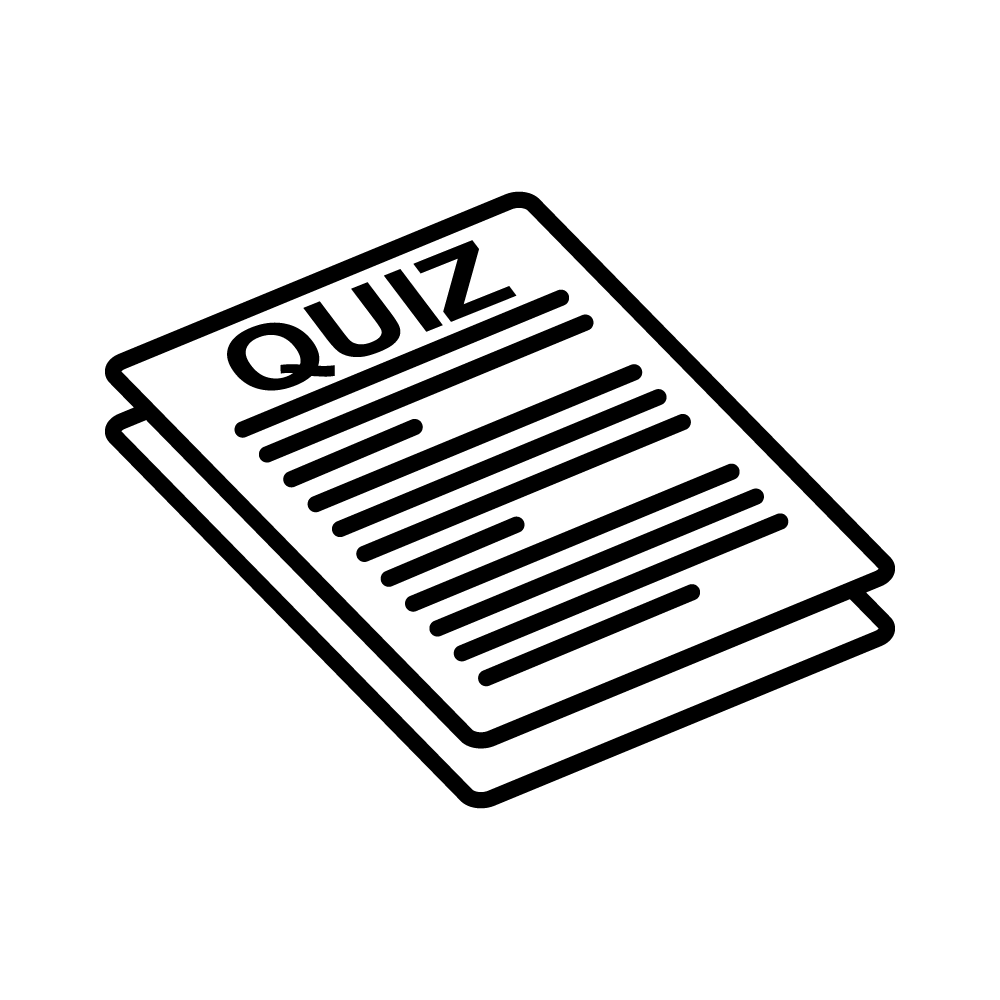
Create Quizzes
Students create a quiz based on the information presented for their peers. This can be used as a review for a test, or jigsaw class activity where students are responsible for teaching other students assigned topics.
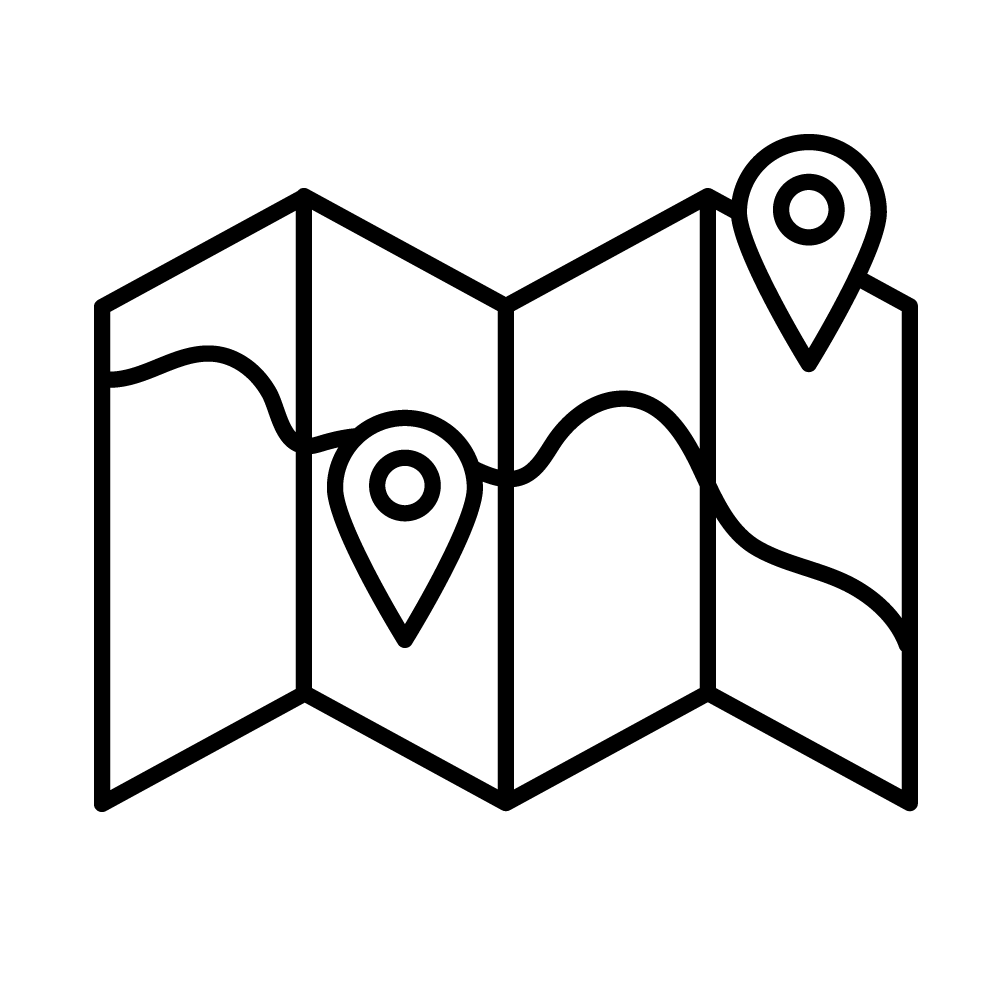
Mapping
Have students draw a map of their neighborhood and town with their home, school,
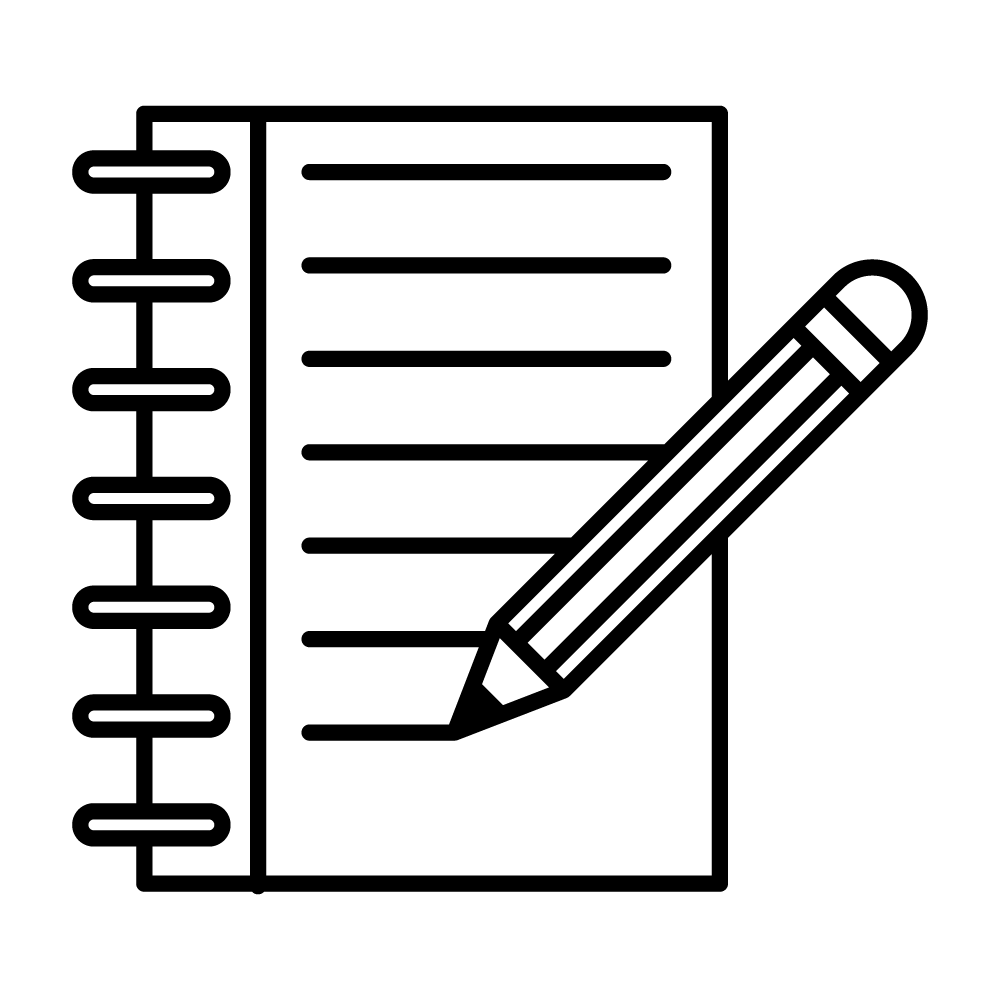
Writing Topics
Describe the community you live in. Does it have plains, hills, lakes, etc.
Write where you live, suburb, etc
What is the weather like where you live? Describe the weather.
What do the four seasons look like where you live?
What is your favorite type of weather and why?
What national resources are in or near where you live?
Why is it important to reduce, reuse and recycle?
How do you reduce, reuse and recycle at your home?
How do you reduce, reuse and recycle at school?

Repurposing
After talking about reducing, reusing, and recycling, bring in items from home (milk containers, plastic containers, newspapers, pop lids, etc. and tell students they have the class period to create something with those items provided (you can also allow them to use scissors, glue, markers, whatever you feel is appropriate for this task) and then the following day have them share with the class what they have created.
Classroom Ideas for ALL Videos
Dozens and dozens of ideas that you can use in your classroom along with our videos!
Related Videos
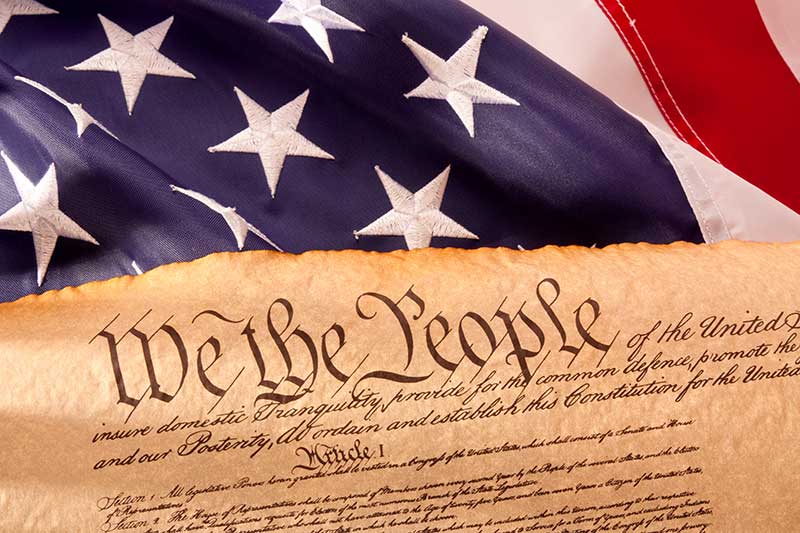
Grade 2 - Our Government At Work
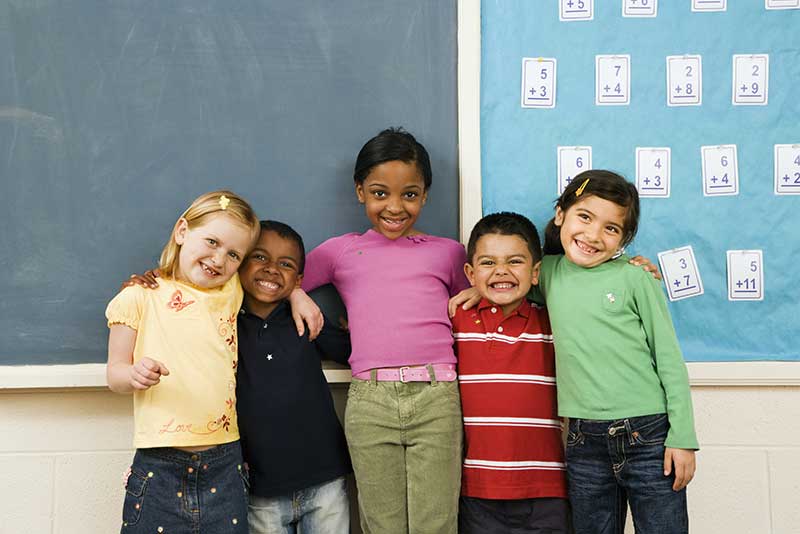
Grade 2 - Living Together
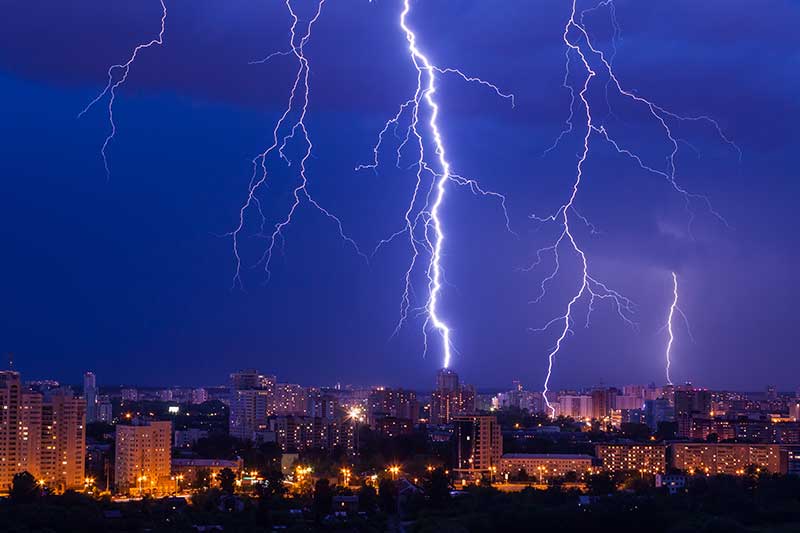
Grade1 - The Earth Around Us
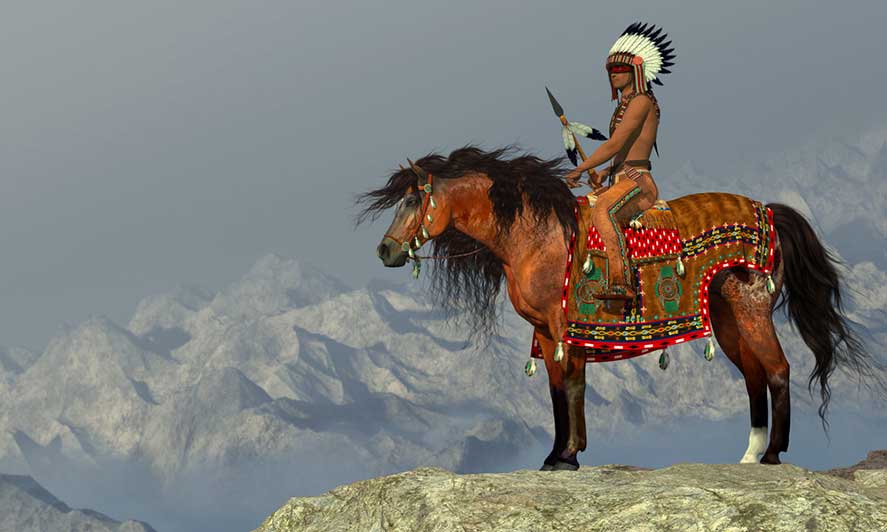
Grade 2 - Early Americans
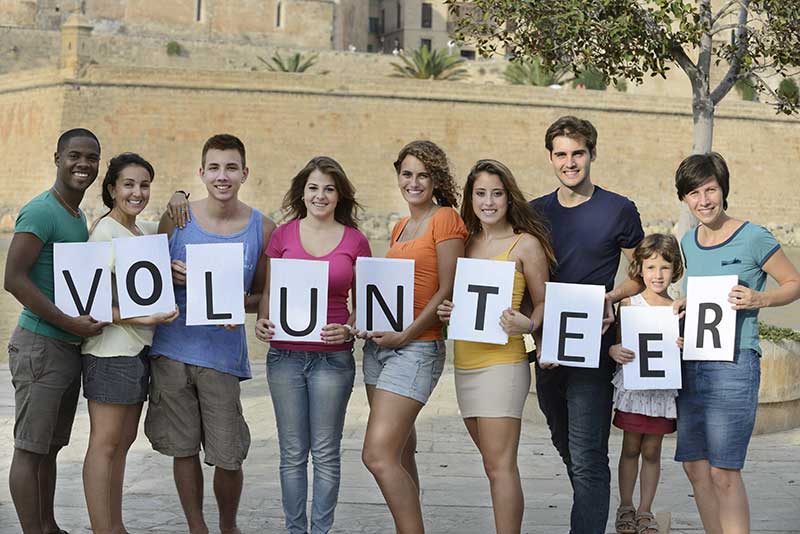
Grade 2 - Work and Money
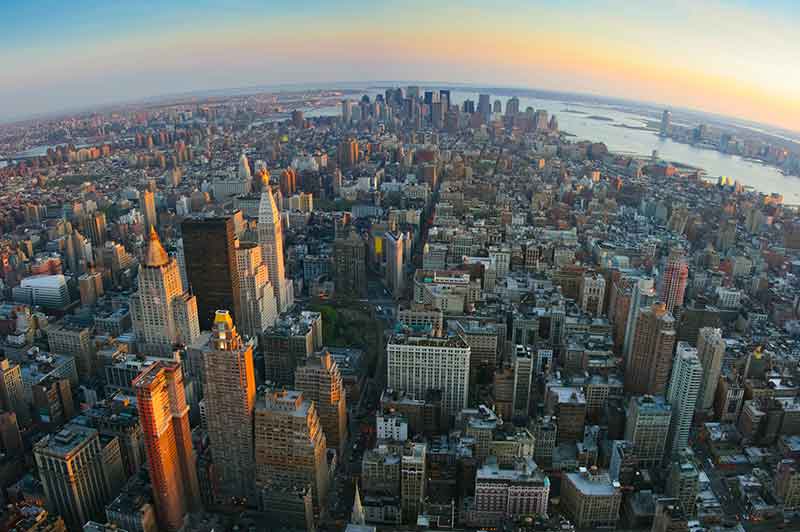
Grade 3 - The Geography of Our Communities
Video Subscriptions
When you only need one video- Unlimited viewing of 1 video
- Post-trip quiz + resources for 1 video
- Access to Closed Captioned version of 1 video
- Lowest-cost option
Teacher + Class Subscription
Teacher + Students- Unlimited access to the entire video lesson library
- All quizzes + learning resources
- Access for 1 teacher + all students
- Access to all Spanish videos + resources
- Access to all Closed Captioned videos
- Best value option for one teacher
School-wide Site License
All teachers + All students- Unlimited access to the entire video lesson library
- All quizzes + learning resources
- Access for all teachers and all students
- Access to all Spanish videos + resources
- Access to all Closed Captioned videos
- Best for school administrators supporting their teachers & students
- Up to 500 students – $450/year
- 500-1,000 students – $600/year
- 1,000+ students – $1,000/year


